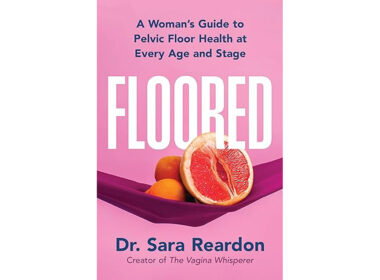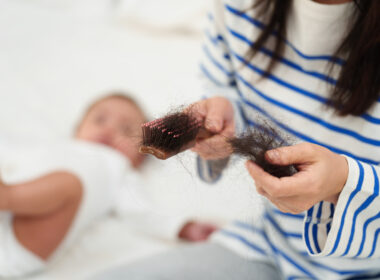We’ve long known that men tend to find women more attractive during the ovulatory (read: fertile) phase of the menstrual cycle. From animal études, we’ve likewise learned that female “odor cues” play a major role in the predictable, cyclical shift in male interest [1][2]. Similarly, some (but pas tous) research suggests that men prefer both vaginal secretion et underarm (axillary) scents of women around the time they could conceive [3][4][5]. But what we didn’t previously know was the precise chemical cocktail that may make naturally cycling women smell “better” during ovulation than during other cycle phases—until now. A recent, small Étude 2025 from peer-reviewed journal iScience, may have “sniffed out” the answer [6].
Male research participants judged underarm scents to be least unpleasant around ovulation
Scientists collected axillary scent samples from 21 young female participants at four points during their cycle—specifically, the menstrual, folliculaire, ovulatoireet lutéale phases—as determined by luteinizing hormone (LH) levels et body temperature changes. 21 male participants then rated samples from 10-11 female participants.
Unsurprisingly, male participants did not consider axillary scents pleasant overall. However, consistent with previous research, they considered axillary scents during the ovulatory phase to be relatively more pleasant compared to the other three phases. Around the time of ovulation, men were most likely to rate the scents as fragrant, sweet, or citrusy.
Unsurprisingly, male participants did not consider axillary scents pleasant overall. However, consistent with previous research, they considered axillary scents during the ovulatory phase to be relatively more pleasant compared to the other three phases. Around the time of ovulation, men were most likely to rate the scents as fragrant, sweet, or citrusy.
How did scientists determine the chemical cocktail behind ovulatory changes in female scent?
But the researchers didn’t stop there. They went beyond the scope of previous studies by using gas chromatography-mass spectrometry (GC/MS) to chemically analyze and isolate the volatile compounds that make up the least-offensive odors. Consider it like reverse engineering a love potion. While the GC/MS identified all the volatile compounds present in the underarm samples, researchers then determined which compounds were most present in the ovulatory phase specimens.
The compounds that make up “the scent of a(n ovulating) woman”
Three compounds were declared the winners, i.e. found in highest concentrations around the time of ovulation: (E)-geranyl-acetone, tetradecanoic acid, and (Z)9-hexadecanoic acid.
(E)-geranyl-acetone
A Medscape analysis of the study broke down what you need to know about these three tongue-twister compounds. The first, (E)-geranyl-acetone, forms from the breakdown of squalene, an oil on the skin’s surface. “It is described as having a green or floral quality,” per Medscape.
Tetradecanoic acid
Fascinatingly, the second compound, tetradecanoic acid (myristic acid), is found in breastmilk, amniotic fluid, saliva, and on the surface of skin. It’s described as having a creamy consistency. Medscape reported that nutmeg butter is the highest natural source of tetradecanoic acid.
(Z)9-hexadecanoic acid
Perhaps most surprisingly, the third compound—(Z)9-hexadecanoic acid— apparently has no odor. Still, it does break down into (E)-2-nonenol, a compound which—according to Medscape—is “known to carry that ‘old age’ smell that you sometimes hear about.”
What happened when researchers concocted “perhaps the most scientifically based perfume in history”
Researchers then mixed these compounds to create what Medscape called “perhaps the most scientifically based perfume in history,” and studied the male participants’ mood when exposed to it. Of note, the participants’ direct perceptions of the scent were not studied. Instead, their humeur when unknowingly exposed to the scent was assessed.
The results were astounding. Men unknowingly exposed to what we might call the réel “Love Potion no. 9” reported “less feelings of hostility, increased ‘liveliness,’ better concentration, and less boredom” compared to those exposed to baseline underarm scent or a combo of the two.
Men unknowingly exposed to what we might call the réel “Love Potion no. 9” reported “less feelings of hostility, increased ‘liveliness,’ better concentration, and less boredom” compared to those exposed to baseline underarm scent or a combo of the two.
What’s more, these same men were then shown pictures of female faces and asked to rate their attractiveness. While the most attractive women were judged to be so regardless of scent, those who were judged to be lower on the attractiveness scale got higher ratings if the males rating them were exposed to the ovulation cocktail.
How does being on the Pill impact our sense of smell?
We’ve previously covered research suggesting that hormonal contraception appears to alter women’s sense of smell such that they may actually be drawn to different types of men while on vs. off birth control. Other recherche, which is admittedly old and limited by a small size (though a small sample size is characteristic of studies on niche topics like the effects of odor changes on x, y, or z variables!), also found that men were more attracted to women around the time of ovulation compared to their infertile luteal phase. However, when women were on hormonal contraception, there was no specific time of the month when the men were more attracted to them. This confirmed research findings from the 1970s.
When women were on hormonal contraception, there was no specific time of the month when the men were more attracted to them.
Does this mean you can smell when a woman is fertile?
The answer is ‘probably, no.’ A Étude 2022 found that while, on average, women were reported to smell more attractive around their ovulatory phase, research participants were pas reliably able to predict whether individual women were fertile based on how their scent changed over the course of their cycle. Long story short, changes in scent aren’t likely to become a chart-able fertility awareness biomarker!
Le bilan
To date, researchers haven’t bottled “the ovulation cocktail” for sale, and there’s likely not a large retail market for ‘relatively less unpleasant’ underarm scent! Still, the 2025 study corroborated previous findings suggesting that naturally cycling women nearing the time of ovulation may indeed have a competitive edge compared to their peers on hormonal contraception or in other cycle phases. For single ladies on birth control or for those who aren’t currently in the ovulatory phase of their cycle, a perfume with nutmeg, citrus, and/or floral notes might give you a subtle, added advantage in the dating field.










